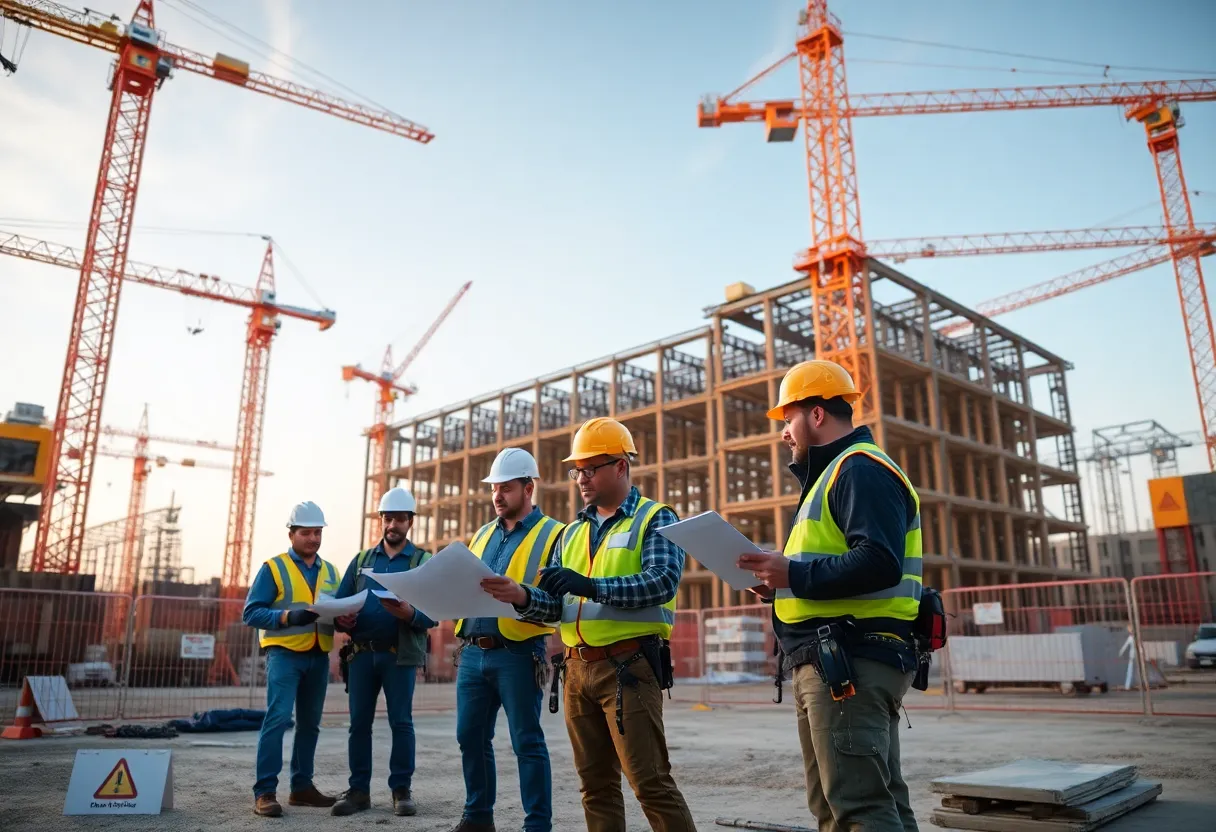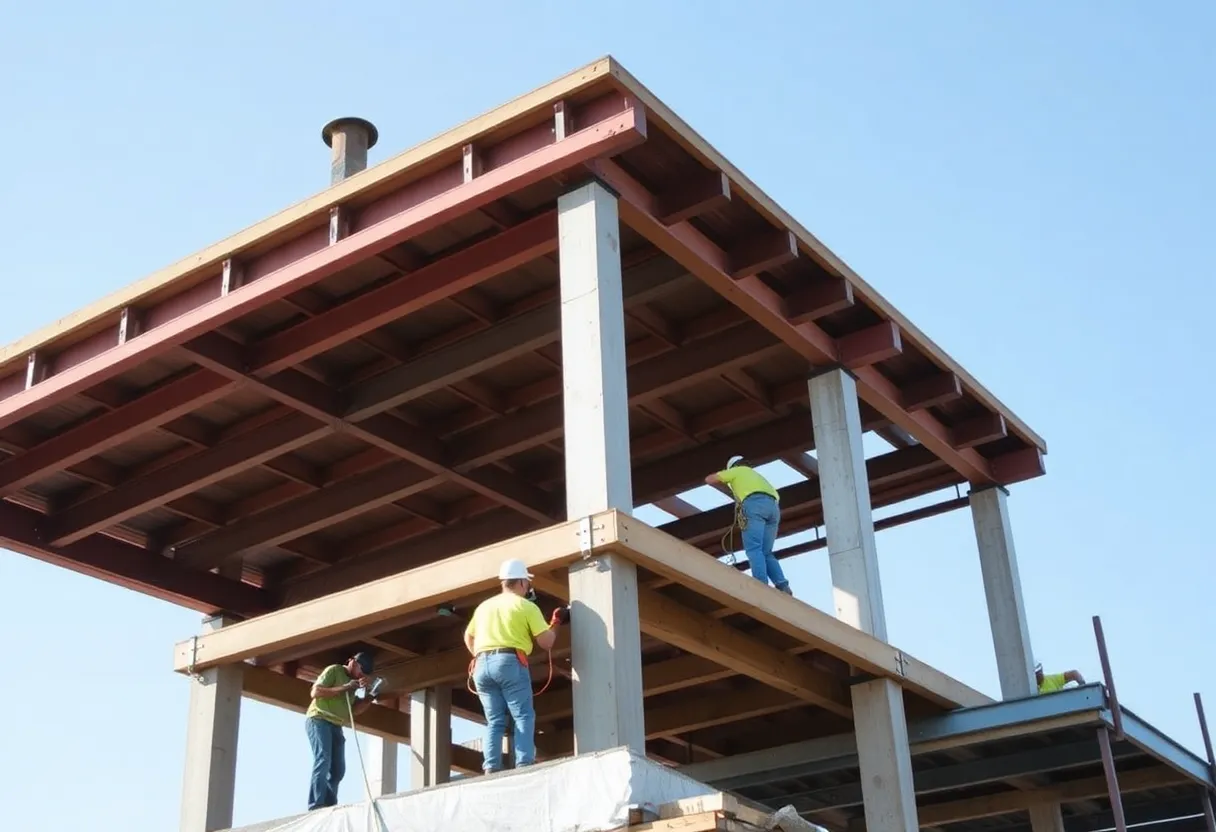United States, August 17, 2025
News Summary
The U.S. construction sector is entering a potentially transformative period fueled by a major federal infrastructure package, rapid clean-energy projects, surging data center demand and new AI-enabled tools. Yet project volume alone won’t ensure success: industry analysis finds the biggest risks are leadership gaps, talent shortages, safety culture lapses and fragile systems that struggle to scale. Firms that invest in leadership development, structured onboarding, safety-led cultures, continuous learning and agile decision-making are better positioned to reduce rework, raise productivity and retain workers while capitalizing on unprecedented opportunity.
U.S. Construction Nears Transformative Decade as Projects Surge — Leadership and Talent Are the Real Bottlenecks
Top line: The U.S. construction industry is entering what may be one of its most transformative decades, driven by a historic federal infrastructure package, rapid clean energy deployment, a boom in data center builds, and sweeping advances in technology and artificial intelligence. At the same time, growth and backlog alone do not guarantee success; the industry’s biggest risks revolve around leadership, talent development, safety culture, and scalable organizational systems.
Why growth is accelerating
The construction market is receiving a major boost from a $1.2 trillion federal infrastructure package. Market projections cited for recent years show expansion from about $1.77 trillion in 2024 to more than $2.12 trillion in 2025. Advances in design and project-management tools, including artificial intelligence, are changing how jobs are planned and delivered. Parallel shifts — rapid clean energy initiatives and surging data center demand to power the digital economy and AI workloads — are creating new classes of work and large capital requirements for high-capacity facilities.
Growth creates new organizational risk
Even with abundant projects, many firms are discovering that scaling quickly exposes organizational cracks. When headcount doubles or triples, succession plans can lag, decision-making may slow, and cultural cohesion can fray. The argument advanced in industry analysis is that the firms most likely to thrive will be those that invest aggressively in leadership development, talent pipelines, and organizational resilience — not just in cranes and concrete.
People and leadership: the decisive edge
Research cited indicates companies with robust leadership pipelines experience about 1.5 times higher employee retention and roughly 29% higher profitability compared with peers that neglect leadership development. The consequences of leadership neglect are amplified in construction, where projects are complex, labor markets are tight, and safety is paramount.
Safety is a leadership issue
Safety shortfalls are costly in human and financial terms. Unsafe work environments can cost lives and erode profitability and reputation. Safety-related costs are reported to be able to consume 6–9% of project budgets. Organizations that embed safety into leadership practices — encouraging accountability, empowering crews to intervene, and creating psychological safety for reporting — are reported to see incident rates fall by 20–50%. Those same organizations reportedly achieve 15–25% higher productivity, better morale, and improved client trust.
Reducing rework and improving learning
Industry studies estimate rework accounts for 5–10% of total project costs. The proposed solution is less centralized oversight and more structured learning. Techniques borrowed from military and aviation — formalized debriefings and continuous feedback loops — are recommended. Firms that adopt structured debriefing and continuous-learning practices report reductions in rework of 30–40%.
Agility and culture matter
Rapid expansion often mirrors startup-like growth, with evolving systems and pressure to deliver more with less. Firms with rigid hierarchies and siloed communications face drag; those adopting agile leadership practices reportedly speed decision cycles by about 60% and improve project delivery efficiency by approximately 30%. The talent shortage is a current crisis: nearly 40% of the skilled construction workforce is projected to retire within the next decade. Replacement costs are significant — replacing a frontline worker can cost 16–20% of annual salary, while replacing mid-level and senior positions can approach 100% of annual salary.
Retention tactics that work
Small improvements in retention can yield large financial benefits. Firms that focus on systemic investments — structured onboarding, mentorship, and clear career paths — outperform those relying only on signing bonuses. Structured onboarding and mentoring programs are reported to improve retention by about 50% in the first 18 months and accelerate time to full productivity by 20%. Younger workers increasingly value culture and development opportunities as much as pay.
Examples and outcomes
Partnerships cited in industry analysis show that embedding leadership competencies into scalable operating systems, often supported by AI-powered tools, can create durable foundations for multi-year growth. Leadership programs that tie directly to safety initiatives have reportedly reduced incidents on job sites and reinforced workforce trust, yielding lower costs, stronger margins, and the ability to take on opportunities competitors cannot.
Personnel and insurance-market movements
Several large brokerages and insurers announced leadership changes and practice appointments to align with sector demand. Multiple national practice leaders were named across transportation, energy, law-firms, marine, cargo and life-sciences practices. Another major firm brought back an executive to lead construction, infrastructure and surety in North America and hired a seasoned head of surety to accelerate that agenda. Industry firms emphasize that these moves are intended to strengthen sector specialization and to respond to growing client needs as industries transform.
On the insurer side, marine insurance teams are positioning beyond ocean cargo, expanding inland marine, stock throughput, contractors’ equipment and builders’ risk coverage, and increasingly underwriting data center and AI-supporting infrastructure. Some teams have grown significantly in recent months and are structured by expertise rather than strict ocean vs. inland divisions.
Construction company leadership changes
Several construction firms promoted senior regional leaders to guide operations through a period of record growth. Promotions included district managers and vice presidents charged with overseeing strategic expansion across regions such as the Pacific Northwest, the Midwest, and the Rocky Mountain area. These moves underscore emphasis on local leadership to maintain safety programs, client focus, and community engagement while scaling operations.
Sustainability and industry credentials
Leading builders continue to prioritize sustainability and resilience. Recognition for organizational sustainability work and commitments to net-zero targets inform recruiting and procurement. Pilot projects in mass timber and low-carbon concrete illustrate how sustainability is being operationalized on major builds.
Bottom line
Project volume and capital are unlikely to be the limiting factor in the years ahead. The greater risk is the human side: leadership, culture, systems, and talent. Firms that go beyond the blueprint — investing in leadership development, safety-led cultures, continuous learning, agile decision-making, and meaningful career progression — are positioned to convert the decade’s abundant opportunities into lasting advantage.
FAQ
Q: What is driving growth in the construction industry?
A: Major drivers include a large federal infrastructure package, rapid clean energy projects, and a surge in data center construction to meet digital and AI demand, together with productivity gains from new technologies and AI.
Q: Why are leadership and talent such critical concerns?
A: Rapid scaling exposes gaps in succession planning, decision-making, and culture. Research shows strong leadership pipelines boost retention and profitability; conversely, neglecting leadership can lead to higher costs, safety issues, and turnover.
Q: How does safety tie into leadership?
A: Safety is framed as a leadership responsibility. Organizations that embed safety into leadership practices reduce incidents substantially and gain productivity and trust benefits.
Q: What practical steps can firms take now?
A: Invest in structured onboarding and mentoring, formal debriefs and continuous learning, leadership competency mapping across roles, safety-leadership programs, and agile decision processes.
Q: Are there market shifts in insurance that firms should note?
A: Yes. Marine and inland marine coverage is evolving to include stock throughput, contractors’ equipment, builders’ risk, and data-center coverage. Insurers and brokers are aligning leaders and practices to meet these changing risks.
Key features at a glance
| Feature | Details |
|---|---|
| Market stimulus | $1.2 trillion federal infrastructure package; projected market growth from $1.77T (2024) to > $2.12T (2025) |
| Sector drivers | Clean energy build-outs, data center expansion, AI and technology adoption |
| Organizational risk | Leadership gaps during rapid scaling; cultural erosion; slowed decision-making |
| Safety impact | Safety costs can consume 6–9% of project budgets; safety-leadership cultures lower incidents and lift productivity |
| Talent metrics | Nearly 40% of skilled workforce may retire within a decade; replacement costs range from 16–20% to 100% of salary |
| Retention tools | Onboarding and mentoring can boost early retention by 50% and speed productivity by 20% |
| Operational solutions | Structured debriefs reduce rework 30–40%; agile leadership shortens decision cycles and raises delivery efficiency |
Deeper Dive: News & Info About This Topic
Additional Resources
- Forbes: 5 Big Reasons Leadership Effectiveness Is Imperative in Construction
- Wikipedia: Construction industry
- Lockton: Lockton Appoints U.S. Leaders in Key Industry Verticals
- Google Search: Lockton appoints U.S. leaders in key industry verticals
- Risk & Insurance: Aon Announces New Leadership in Construction and Surety Practice in North America
- Google Scholar: Aon construction and surety leadership North America
- PR Newswire: PCL Construction Announces Leadership Changes to Support Strategic Growth
- Encyclopedia Britannica: PCL Construction
- Turner Construction: Turner Wins 2024 Leadership Award from U.S. Green Building Council
- Google News: Turner wins 2024 leadership award US Green Building Council
Author: Construction FL News
The FLORIDA STAFF WRITER represents the experienced team at constructionflnews.com, your go-to source for actionable local news and information in Florida and beyond. Specializing in "news you can use," we cover essential topics like product reviews for personal and business needs, local business directories, politics, real estate trends, neighborhood insights, and state news affecting the area—with deep expertise drawn from years of dedicated reporting and strong community input, including local press releases and business updates. We deliver top reporting on high-value events such as the Florida Build Expo, major infrastructure projects, and advancements in construction technology showcases. Our coverage extends to key organizations like the Associated Builders and Contractors of Florida and the Florida Home Builders Association, plus leading businesses in construction and legal services that power the local economy such as CMiC Global and Shutts & Bowen LLP. As part of the broader network, including constructioncanews.com, constructionnynews.com, and constructiontxnews.com, we provide comprehensive, credible insights into the dynamic construction landscape across multiple states.





